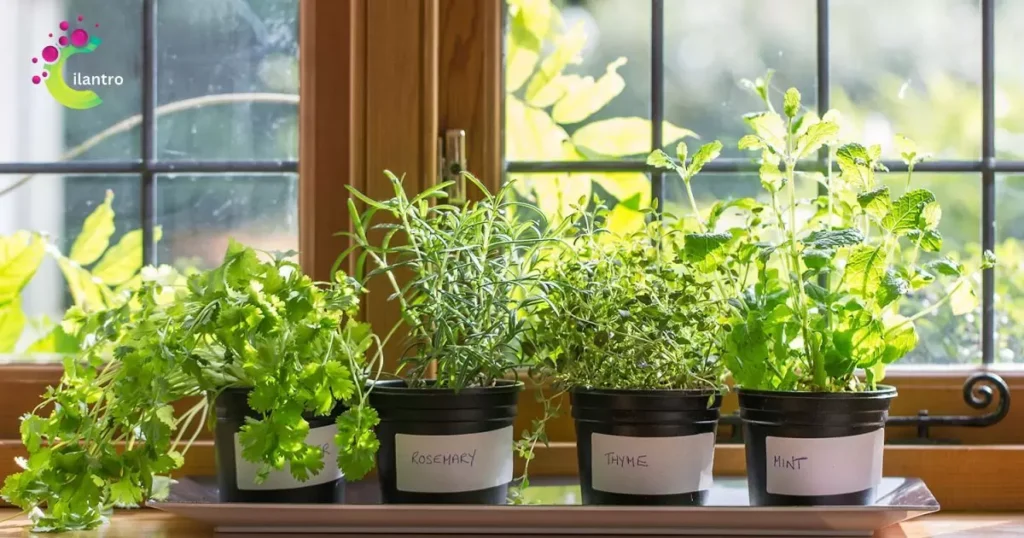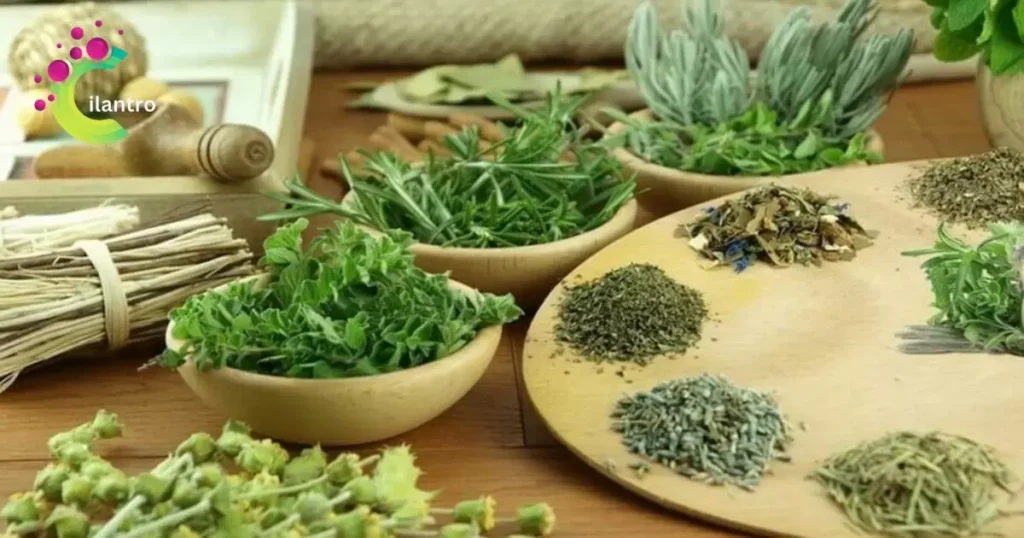Oregano and cilantro be planted together. They complement each other well, as oregano prefers drier soil, while cilantro thrives in more moisture, creating a harmonious environment for both herbs to grow.
The perfect plant pair is oregano and cilantro. The question is here, can oregano and cilantro be planted together? Yeah, sure, you can do it. Planting them together creates a harmonious garden duo. Oregano thrives in the sunlight, while cilantro prefers a bit of shade. Together, they not only complement each other but also make your garden a flavorful haven.
You can plant oregano and cilantro together in your garden. They are compatible companions, sharing similar sunlight and watering needs. Both herbs thrive in well-drained soil with adequate sunlight. Planting them together can enhance your garden’s flavor and fragrance. In this article, we discuss more interesting things, so stay tuned with us!
Characteristics of Oregano And Cilantro
Oregano and cilantro are two distinct herbs with unique characteristics. Oregano, known for its robust flavor, has a warm and slightly bitter taste. It is commonly used in Mediterranean and Italian cuisines, adding a savory touch to dishes like pizza and pasta. Cilantro boasts a fresh and citrusy flavor, often described as a mix of parsley and citrus.
It is a staple in Mexican, Indian, and Southeast Asian cuisines, enhancing the taste of salsas, curries, and salads. Both herbs are rich in antioxidants and offer potential health benefits. Oregano contains compounds with antimicrobial properties, while cilantro is a good source of vitamins and minerals.
In terms of appearance, oregano has small, oval-shaped leaves with a green hue, while cilantro leaves are delicate, lacy, and bright green. It’s important to note that some people find cilantro’s taste refreshing. Cilantro in spaghetti sauce can add a unique and vibrant flavor profile, complementing the overall taste of the dish. However, others may perceive a soapy or unpleasant flavor, a phenomenon linked to genetics.
- Growing conditions
Oregano and cilantro thrive in well-drained soil with good sunlight. Can oregano and cilantro be planted together? Exactly, plant them in an area where they receive at least 6-8 hours of sunlight daily. Ensure the soil is slightly alkaline for oregano and well-drained for cilantro. Water oregano moderately, allowing the soil to dry between waterings.
Cilantro prefers consistent moisture, so keep the soil evenly moist. Both herbs benefit from organic matter in the soil, like compost. Oregano can withstand drier conditions, while cilantro may bolt in hot weather, so plant it in partial shade during intense heat. Regular pruning helps both herbs stay bushy and flavorful.
- Soil requirements
Oregano and cilantro are herbs that thrive in specific soil conditions. The soil should be rich in organic matter to provide essential nutrients for their growth. A slightly acidic to neutral pH level, ranging from 6.0 to 7.0, is ideal for these herbs.
Good aeration is crucial, so adding perlite or sand can improve soil structure. Oregano enjoys a slightly drier environment, so avoid overly moist soil. Cilantro, on the other hand, benefits from consistently moist soil to prevent premature bolting. Regularly check the soil moisture and adjust watering accordingly for successful cultivation of these flavorful herbs.
- Sunlight needs
Both, like many plants, thrive in sunlight. They both require at least 6 to 8 hours of sunlight per day. These herbs love basking in the sun, and it’s essential for their growth. Place them in a sunny spot near a window or outdoors, where they can soak up the sun’s rays. Ensure they get direct sunlight for the best results.
If growing them indoors, rotate the pots regularly to expose all sides to sunlight. Adequate sunlight not only promotes healthy growth but also enhances the flavor of the oregano and cilantro leaves, making them more aromatic for culinary use. Remember, sunlight is the key to happy and flavorful herbs!
- Watering preferences
Oregano and cilantro have different watering needs. Oregano prefers well-drained soil and likes to be watered when the top inch of soil feels dry. Avoid overwatering, as it can lead to root rot. Cilantro, on the other hand, likes consistently moist soil but is not waterlogged. Water cilantro when the soil surface is slightly dry to the touch.
Both herbs benefit from watering at the base to keep their leaves dry and prevent diseases. Mulching around the plants helps retain moisture and regulate soil temperature. Observing the specific watering preferences of oregano and cilantro will contribute to their health and vitality in your garden.
Compatibility of Oregano and Cilantro
Oregano and cilantro make a tasty pair in the kitchen. These herbs share a compatible flavor profile, enhancing many dishes. Oregano’s robust, earthy notes complement cilantro’s fresh and citrusy taste. Whether in soups, salads, or marinades, their compatibility adds depth and complexity. Both herbs also offer health benefits and are packed with antioxidants and vitamins.
When used together, they create a harmonious blend that elevates the overall taste of a meal. Experiment with these two herbs in your favorite recipes to discover the delightful compatibility they bring to your culinary creations. Enjoy the dynamic duo of oregano and cilantro for a flavorful culinary experience.
The 9 Best Companion Plants for Cilantro

Cilantro, a popular herb, benefits from strategic companion planting for improved growth and flavor. Planting cilantro alongside basil helps deter pests, while intercropping with chervil enhances its overall flavor. Tomatoes and cilantro thrive together, as tomatoes repel certain insects harmful to cilantro. Planting cilantro near onions and garlic can contribute to a healthier garden ecosystem. Now that we further discuss these points, stay in touch with us!
Basil Boosts Flavor
Planting basil near cilantro enhances its flavor, creating a dynamic herb pairing in your garden.
Chives for Pest Control
Introduce chives as cilantro companions to naturally repel pests and protect your herbs from unwanted insect visitors.
Nasturtiums Attract Beneficial Insects
These vibrant flowers attract beneficial insects that help control harmful pests, fostering a healthier cilantro environment.
Dill for Improved Growth
Planting dill alongside cilantro can stimulate growth and improve overall plant vigor, creating a thriving herb bed.
Coriander and Anise Symbiosis
Coriander, the seed form of cilantro, pairs well with anise, providing a harmonious relationship in the garden and on the plate.
Mint for Repelling Pests
Mint acts as a natural pest deterrent, making it an excellent companion for cilantro and safeguarding it from potential threats.
Marigolds for Soil Health
Marigolds not only add a pop of color but also contribute to soil health, making them ideal companions for cilantro in your garden.
Rosemary for Height Variation
The tall stature of rosemary complements cilantro’s low and bushy growth, creating an aesthetically pleasing and functional herb garden.
Oregano Enhances Flavor
Planting oregano near cilantro enhances both herbs’ flavors, offering a delightful combination for culinary enthusiasts.
Thyme for Ground Cover
Thyme serves as an excellent ground cover around cilantro, preventing weed growth and creating a visually appealing herb landscape.
Cilantro Companion Planting Benefits
Cilantro, a popular herb, offers several companion planting benefits when strategically placed in gardens. Its aromatic leaves act as a natural deterrent for certain pests, including aphids and spider mites, making it an effective companion for vegetables such as tomatoes and peppers. It attracts beneficial insects like ladybugs and hoverflies, which contribute to a balanced and healthier garden ecosystem.
The herb’s ability to repel harmful nematodes makes it an ideal companion for root vegetables like carrots. Cilantro’s growth pattern, with its tall stems and delicate foliage, also provides shade for more sun-sensitive plants. Planting cilantro near beans and peas can enhance their nitrogen-fixing capabilities, promoting overall soil fertility.
Tips for Planting Oregano and Cilantro Together
Certainly! Here’s a table with 10 points about planting oregano and cilantro together:
| No. | Tips for Planting Oregano and Cilantro Together |
| 1 | Companion Planting: Oregano and cilantro are compatible companions in the garden, as they can benefit each other’s growth. |
| 2 | Sunlight Requirements: Ensure they receive adequate sunlight, ideally 6-8 hours a day, for optimal growth and flavor development. |
| 3 | Well-Drained Soil: Plant in well-drained, slightly alkaline soil to prevent waterlogging and root rot. |
| 4 | Spacing: Provide sufficient spacing between plants (about 12-18 inches) to allow air circulation and reduce the risk of diseases. |
| 5 | Watering: Keep the soil consistently moist but not waterlogged. Both herbs prefer slightly drier conditions compared to waterlogged soil. |
| 6 | Container Gardening: If space is limited, consider planting them in containers with well-draining potting mix. |
| 7 | Mulching: Apply a layer of organic mulch to help retain soil moisture, suppress weeds, and regulate temperature. |
| 8 | Feeding: Fertilize moderately with a balanced, all-purpose fertilizer to support healthy growth. Avoid excessive nitrogen, which can lead to leggy plants. |
| 9 | Harvesting: Regularly harvest the leaves to promote bushier growth. Harvest in the morning for the best flavor and aroma. |
| 10 | Pest Control: Keep an eye out for pests and use natural remedies or companion plants to deter them. For example, marigolds can help repel certain pests. |
These tips should help you successfully plant and care for oregano and cilantro together in your garden.
What not to plant with cilantro
Avoid planting cilantro near fennel, as they may inhibit each other’s growth. Keep cilantro away from dill, as they belong to the same family and can cross-pollinate, affecting flavor. Don’t plant cilantro close to coriander, its seed form, to prevent cross-contamination.
Keep cilantro away from strong-smelling herbs like basil, as their aromas may clash. Avoid planting cilantro near potatoes, as they can potentially stunt each other’s growth. Lastly, keep cilantro away from plants that require consistent watering, as cilantro prefers drier conditions.
- Carrots
- Dill
- Fennel
- Tomatoes
- Cucumbers
- Mint
Mediterranean Herbs

Mediterranean herbs, such as rosemary, thyme, and oregano, are integral to the region’s culinary traditions, adding robust flavors to dishes. They are known for their flavor profiles.
These herbs are rich in antioxidants and have been linked to many health benefits. Their popularity extends globally, contributing to diverse cuisines beyond the Mediterranean.
Thyme
They are commonly used in cooking and are known for their earthy and slightly minty flavor. It is often used to enhance the taste of various dishes, both fresh and dried.
Oregano
Oregano is a fragrant herb commonly used in Mediterranean cuisine, known for its savory flavor. It is rich in antioxidants and has potential health benefits.
Get 9 Free Companion Planting Charts
Enhance your garden’s productivity by strategically pairing compatible plants. Access valuable insights and optimize your planting choices for a thriving and harmonious garden environment. Claim your free charts now for a more successful and bountiful harvest.
Legumes
They are a family of plants that includes beans, peas, and lentils. They are known for their ability to fix nitrogen in the soil, enhancing fertility. Legumes are a valuable source of protein.
Brassicas
They are known for their cruciferous nature, including cabbage, broccoli, and Brussels sprouts. These plants are rich in nutrients, such as vitamins A and C, and are celebrated for their potential cancer-fighting properties.
Potatoes
Potatoes are starchy, underground tubers that belong to the Solanaceae family. They are a rich source of carbohydrates, vitamins, and minerals.
Radishes
They are a root vegetable known for their crisp texture and peppery flavor, often used in salads or as a garnish. They are quick-growing, typically ready for harvest in as little as three weeks.
Parsley
Parsley is a versatile herb rich in vitamins A and C, commonly used to add flavor and garnish dishes. It is known for its fresh, crisp taste and is a popular choice in various culinary applications worldwide.
Basil
It is a fragrant herb known for its rich flavor, commonly used in culinary applications like salads and pasta. It also has medicinal properties and is believed to have anti-inflammatory and antioxidant benefits.
Can You plant Cilantro with Tomatoes?

Yes, sure you can plant cilantro with tomatoes. Both cilantro and tomatoes thrive in similar growing conditions. Make sure to choose a sunny location for planting. Cilantro can act as a natural pest deterrent for tomatoes.
Plant them together to save space and promote a companion planting environment. Water them regularly and enjoy the benefits of fresh cilantro and juicy tomatoes in your garden.
FAQ’s
What herbs grow well indoors?
Herbs such as basil, mint, parsley, chives, and thyme grow well indoors.
Can you plant cilantro with carrots?
Yes, cilantro and carrots can be planted together as companion plants, benefiting each other’s growth.
What can you not plant next to oregano?
Avoid planting oregano next to beans as they can inhibit each other’s growth.
What 3 herbs can be planted together?
Basil, oregano, and parsley can be planted together as they have similar sun, water, and soil requirements.
Conclusion
Planting oregano and cilantro together can be a successful gardening strategy. Can oregano and cilantro be planted together? Both herbs have similar growing requirements, making them compatible companions in the garden. They thrive in well-drained soil with ample sunlight, making it convenient to cultivate them side by side. Oregano and cilantro also complement each other in terms of flavor and culinary uses, making them a practical duo for a kitchen garden.
Oregano, with its robust and earthy taste, can add depth to various dishes, while cilantro brings a fresh, citrusy note. When planted together, they create a harmonious herb bed that not only enhances the visual appeal of your garden but also provides convenient access to two versatile herbs for your culinary endeavors. Just ensure that the soil is well-drained, and both plants receive adequate sunlight, and you’ll likely enjoy a bountiful harvest of these flavorful herbs throughout the growing season.

Meet our website’s admin, a culinary enthusiast dedicated to curating delectable food ideas. With a passion for gastronomy, they expertly craft and present a diverse array of recipes, tips, and inspirations, making our platform a go-to destination for culinary creativity.











